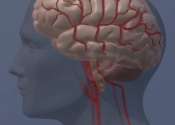Anti-cancer drugs could prevent the hardening of blood vessels that cause heart attack and stroke
Anti-cancer drugs could prevent the build-up of fatty plaques in blood vessels which cause heart attack and stroke, a new study by the University of Sheffield has shown.
Oct 25, 2017
0
1








